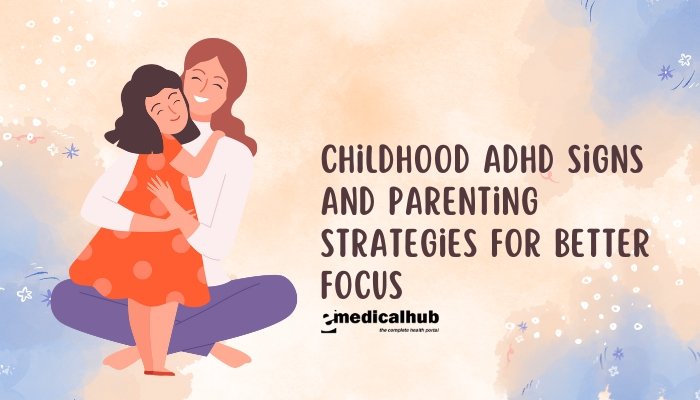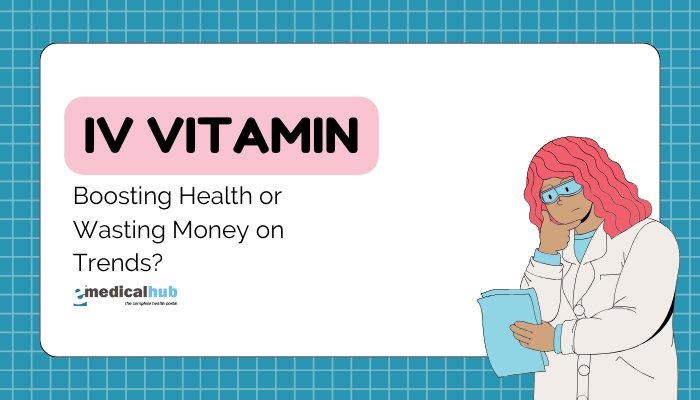Introduction
With workloads increasing, deadlines piling up, and a seemingly never-ending pressure to perform, workplace stress has reached epidemic levels. In this environment, burnout—the state of chronic physical and emotional exhaustion, negative feelings about one’s job, and reduced professional efficacy—often becomes the outcome.
Far more than a buzzword, burnout can have serious implications for mental health, job performance, and overall well-being. Yet, burnout is not a life sentence. By understanding its roots, detecting early signs, and adopting strategies to restore balance, individuals can recover and regain a sense of fulfillment and resilience at work and in life.
In this article, we take an in-depth look at burnout and its impact on modern professionals. We’ll explore common causes, hallmark symptoms, and the nuanced line between everyday stress and the deeper pathology of burnout. We’ll then offer evidence-based tools and approaches to bounce back, from practical adjustments in work routines and better time management to psychological interventions and mindful self-care.
Because recovery is often a multi-phase journey, it requires intentional changes in mindset, lifestyle, and boundaries. If you or someone you know feels overwhelmed, exhausted, or disillusioned with work, these insights can offer a roadmap to renewed vitality and sense of purpose.
Disclaimer: The content provided here is for general educational purposes and does not replace personalized advice from a mental health or medical professional. If you experience severe or persistent distress, consult a qualified healthcare provider for individualized help.
Understanding Burnout
Defining Burnout
Burnout is a state of mental, physical, and emotional exhaustion typically caused by prolonged and excessive stress. First coined by psychologist Herbert Freudenberger in the 1970s, it’s now recognized globally—particularly by the World Health Organization (WHO)—as a significant occupational phenomenon. Burnout is often broken down into three core dimensions:
- Emotional Exhaustion: Feeling drained, depleted of energy, or unmotivated; tasks that were once manageable now feel insurmountable.
- Depersonalization or Cynicism: Developing a detached or negative attitude towards one’s job or colleagues; cynicism becomes a defensive mechanism.
- Reduced Professional Efficacy: Sensing decreased competence and achievement at work, which can spiral into a negative self-evaluation.
Causes of Workplace Burnout
- Excessive Workload: Handling long hours, tight deadlines, or chronic understaffing can erode mental reserves.
- Lack of Control: Minimal autonomy or control over tasks, schedules, or resources fosters helplessness.
- Poor Work-Life Balance: Constant connectivity, blurred boundaries between work and personal life, and neglecting self-care.
- Insufficient Reward: Feeling that hard work is not recognized, financially or emotionally, breeds disillusionment.
- Conflicting Values: When personal ethics clash with company practices, internal dissonance increases stress.
- Toxic Workplace Culture: Harassment, micromanagement, or high-pressure environments intensify the risk of burnout.
Who Is at Risk?
Anyone in a demanding environment can develop burnout. However:
- High Achievers: Perfectionists or those with strong internal drive might push themselves to extremes, ignoring exhaustion.
- People-Pleasers: Individuals who say “yes” to everything, rarely establishing boundaries, risk overextension.
- Helping Professions: Nurses, physicians, social workers, or caregivers often face emotional strain daily, amplifying the potential for burnout.
- Remote Workers: While flexible, working from home can remove critical boundaries, leading to longer hours and isolation.
Recognizing the Signs and Stages
Early Warning Indicators
Burnout isn’t an on-off switch. It evolves over time, typically offering subtle signals:
- Persistent Fatigue: Ongoing tiredness even after rest or weekends.
- Irritability and Mood Shifts: Small issues cause outsized frustration or anger.
- Reduced Initiative: Procrastination, difficulty starting tasks, or lack of motivation.
- Physical Symptoms: Frequent headaches, gastrointestinal issues, or insomnia.
Escalating Symptoms
As burnout intensifies, more serious red flags emerge:
- Chronic Exhaustion: Waking up already feeling spent, or dozing off unexpectedly.
- Emotional Withdrawal: Distancing from co-workers, friends, or tasks once found meaningful.
- Performance Drop: Missing deadlines, forgetfulness, or decreased quality of work.
- Cynicism and Detachment: Negative or sarcastic outlook on projects, peers, or managers.
Severe Burnout
Left unaddressed, advanced burnout can result in:
- Anxiety or Depression: Overwhelming sense of hopelessness or feeling on edge.
- Physical Breakdown: Elevated risk of cardiovascular issues, immune dysfunction, or musculoskeletal pain.
- Isolation: Avoiding social contact or refusing professional help.
- Possible Substance Use: Alcohol or other substances to cope with stress or insomnia.
Recognizing these patterns early can prevent deeper crises, such as major depression or job loss. Checking in with mental health professionals once signs worsen is crucial.
The Path to Recovery: Key Principles
Accepting the Need for Change
The initial step in burnout recovery is acknowledging that normal stress management is no longer sufficient. Admitting, “I’m burned out, and I must do something about it,” opens the door to transformation. While self-awareness isn’t always easy—some remain in denial until a health crisis occurs—recognition is essential for deciding to reorient lifestyle, work environment, or habits.
Setting Realistic Expectations
No single fix instantly reverses burnout. True recovery often involves an iterative process of rest, reflection, action, and sometimes professional support. A balanced approach includes:
- Short-Term Adjustments: Taking breaks, delegating tasks, or utilizing time off.
- Long-Term Strategy: Considering workplace changes, exploring new roles or career paths if fundamental misalignments exist.
The Holistic Perspective
Addressing burnout means tackling underlying stressors and improving mental resilience. Approaches typically combine:
- Medical/Psychological: Therapy, possible medication if depression or anxiety is present.
- Behavioral: Stress-reduction techniques, boundary-setting, time management.
- Lifestyle: Adequate sleep, balanced nutrition, exercise, social connections.
Practical Steps for Burnout Recovery
Evaluate and Adjust Workload
- Prioritize: Identify tasks that are critical vs. those that can wait or be delegated. A more focused to-do list helps reduce overwhelm.
- Negotiate Workload: Communicate with supervisors about feasible deadlines, or propose streamlined processes.
- Delegate or Collaborate: If possible, share tasks with team members. Avoid the trap of feeling solely responsible for everything.
Redefine Boundaries
- Set Clear Start-End Times: Avoid “always-on” syndrome by concluding work at a fixed hour, especially for remote employees.
- Manage Digital Overload: Turn off push notifications or restrict checking email after hours.
- Learn to Say “No”: Politely decline tasks that exceed capacity or don’t align with your priorities.
Incorporate Stress-Reduction Techniques
- Mindfulness and Meditation
- Spend 5–10 minutes daily practicing breath awareness or guided meditation.
- Evidence shows these techniques help reduce stress and improve emotional regulation.
- Physical Activity
- Regular exercise (e.g., brisk walking, yoga, swimming) lowers cortisol levels and improves mood.
- Movement breaks throughout the workday release built-up tension.
- Journaling
- Document feelings, achievements, or frustrations. This fosters self-awareness and can reveal patterns that need addressing.
Optimize Sleep and Rest
- Consistent Bedtime: Going to bed and waking up at the same time helps regulate circadian rhythms.
- Sleep Hygiene: Avoid caffeine late in the day, limit screen time before bed, and create a relaxing bedtime routine.
- Napping or Micro-Breaks: If your schedule allows, short breaks can replenish energy and mental clarity.
Seek Professional Guidance
- Therapy or Counseling: Cognitive-behavioral therapy (CBT) or stress management counseling can unravel negative thought patterns and provide coping skills.
- Coaching or Mentoring: Career coaches might help reorient job goals or clarify changes in career path.
- Medical Assessment: Rule out underlying conditions like thyroid imbalances, anemia, or chronic fatigue syndrome that might contribute to fatigue.
Connect Socially
- Support Networks: Maintaining contact with friends, family, or support groups fosters a sense of belonging and perspective.
- Colleague Relationships: Building or revitalizing workplace friendships can mitigate stress and add positivity to daily tasks.
- Mentoring: Mentors or peers can offer empathy and strategies, reminding you that you aren’t alone in your struggles.
Rethinking Career or Role
Identifying Deeper Misalignments
If burnout stems from fundamental job dissatisfaction, reevaluating your role or workplace might be necessary. Chronic mismatches between personal values and organizational culture can perpetuate stress, even if you reduce hours or learn coping skills.
- Assess Career Goals: Are you in the right field or position for your talents and passions?
- Consider Reassignment: Another department or job function might reduce the stress from tasks that you find draining or unfulfilling.
Phased Transitions
People sometimes fear big leaps. Instead:
- Negotiating with Management: Seek a different project, partial telework, or job-sharing arrangement to lower the daily burden.
- Freelancing or Part-Time: If finances allow, scaling back might help regain mental health.
- Continuing Education: Learning new skills can open future prospects and reinvigorate interest in your career.
Sustaining Recovery
Maintaining Healthy Habits
- Regular Check-Ins: Weekly self-review of stress levels and workload can help you tackle small issues before they escalate.
- Boundaries 2.0: Periodically revisit boundaries as job tasks or responsibilities shift.
- Self-Care as Non-Negotiable: Keep scheduling time for exercise, hobbies, and mental breaks.
Tracking Wins
Celebrating progress, no matter how small, fosters positivity. Jot down achievements—like finishing a tough project on time or mastering a new skill—and reflect on them when negativity creeps in.
Building Personal Resilience
- Emotional Intelligence: Recognize and manage your emotional states, practice empathy and self-compassion.
- Growth Mindset: View mistakes or setbacks not as reflections of inherent inadequacy, but as opportunities to learn.
- Ongoing Professional Development: Enhanced knowledge or skills can yield more self-confidence, further reducing job-induced stress.
Myths About Burnout
- “Burnout Means You’re Weak”
- Reality: Burnout typically strikes driven, dedicated individuals who’ve prolongedly managed excessive stress. It’s a state, not a personal failing.
- “Vacation Alone Fixes Burnout”
- Reality: A break may help short term, but without structural changes (like lighter workload or new coping methods), burnout may return.
- “Only Certain High-Stress Jobs Cause Burnout”
- Reality: Burnout can happen in any role—full-time parenting, volunteering, or even less obviously stressful jobs—if the demands exceed resources.
Realistic Timeline for Recovery
Immediate Steps: Over a few days to weeks, clarifying tasks, setting boundaries, and adopting small self-care can yield noticeable relief in daily mood.
Medium-Term: Over 1–3 months, therapy or deeper adjustments (like partial role changes) can restore a sense of control and reduce emotional exhaustion.
Long-Term: It may take 6–12 months to fully rebuild resilience, maintain new healthy patterns, or re-experience enthusiasm in one’s career if severe burnout was present.
The process is non-linear, with potential relapses or rough days. Compassion and consistent effort are essential.
Frequently Asked Questions (FAQ)
- Can I handle burnout on my own without therapy or medication?
Mild or early-stage burnout often improves with self-help strategies—like setting boundaries, improving sleep, or practicing mindfulness. However, moderate-to-severe burnout may benefit from professional assistance, particularly if it’s accompanied by anxiety or depression. - Are there supplements or vitamins that cure burnout?
A well-balanced diet can support overall energy levels and mental clarity, but there is no magic vitamin that cures burnout. Ensure adequate B vitamins, iron, and vitamin D, but rely on multi-pronged stress management rather than a single supplement. - I reduced my hours, but I still feel exhausted and demotivated. Why?
Burnout arises from multiple factors, not just workload. Emotional strain, a toxic environment, or personal conflicts can persist even with fewer hours. Reassess these potential triggers and consider a more comprehensive approach (therapy, mindset changes, better boundaries). - Should I quit my job if I’m completely burned out?
Quitting may offer relief, but it’s a major life decision. Explore lesser changes (like adjusting tasks or transferring to a different team) and consult mentors or professionals. If you do leave, aim to address the underlying issues so they don’t repeat in your next role. - Are mental health days just a temporary fix?
Taking a day off for mental health can help short-term. However, lasting recovery generally needs deeper organizational changes (like a more reasonable workload or supportive leadership) plus personal stress management techniques.
Conclusion
Burnout is a severe state of emotional, physical, and mental exhaustion often fueled by chronic workplace stress. However, it is not irreversible. By identifying the warning signs—fatigue, cynicism, reduced productivity—and implementing a cohesive plan that includes setting boundaries, refining time management, seeking professional help, and prioritizing well-being, individuals can gradually rebound from burnout. This involves not only immediate stress relief but also fundamental shifts in how one approaches work and self-care.
From rethinking job roles and delegating tasks to practicing consistent mindfulness, each method helps ease the strain on mind and body. Combined, they can revitalize motivation, creativity, and a sense of fulfillment. Ultimately, recovering from burnout isn’t about returning to the old ways that led to burnout but about crafting a healthier, more balanced life that respects personal limits and fosters resilience against future stress.
If you suspect or feel burned out, act sooner rather than later—whether seeking help from a mental health professional or making small daily adjustments. By doing so, you pave the path to renewed energy, purpose, and satisfaction in both your professional and personal life.
References
- Maslach C, Leiter MP. Understanding the burnout experience: recent research and its implications for psychiatry. World Psychiatry. 2016;15(2):103-111.
- Freudenberger H. Staff burn-out. J Soc Issues. 1974;30(1):159-165.
- WHO. Burn-out an “occupational phenomenon”: International Classification of Diseases. World Health Organization, 2019.
- Shirom A. Burnout in work organizations. In: Cooper CL, Robertson IT, editors. International Review of Industrial and Organizational Psychology. 1989. p. 25-48.
- Salvagioni DA, Nesello Melanda F, Mesas AE, et al. Physical, psychological and occupational consequences of job burnout: a systematic review of prospective studies. PLoS One. 2017;12(10):e0185781.
- Leiter MP, Maslach C. Preventing burnout and building engagement: A complete program for organizational renewal. John Wiley & Sons; 2008.
- Carod-Artal FJ, Vázquez-Cabrera C. Burnout syndrome in an international setting. Arch Clin Psychiatry. 2013;40(1):31-37.
- Demerouti E, Bakker AB. The job demands-resources model: Challenges for future research. SA J Ind Psychol. 2011;37(2):1-9.
- Hakanen JJ, Schaufeli WB, Ahola K. The Job Demands-Resources model: A three-year cross-lagged study of burnout, depression, commitment, and work engagement. Work Stress. 2008;22(3):224-241.
- Shanafelt TD, Hasan O, Dyrbye LN, et al. Changes in burnout and satisfaction with work-life balance in physicians. Mayo Clin Proc. 2015;90(12):1600-1613.
- Awa WL, Plaumann M, Walter U. Burnout prevention: A review of intervention programs. Patient Educ Couns. 2010;78(2):184-190.
- Lomas T, Ivtzan I, Fu CHY. Mindfulness-based interventions in the workplace: An inclusive systematic review and meta-analysis of their impact upon wellbeing. J Posit Psychol. 2019;14(6):625-640.







